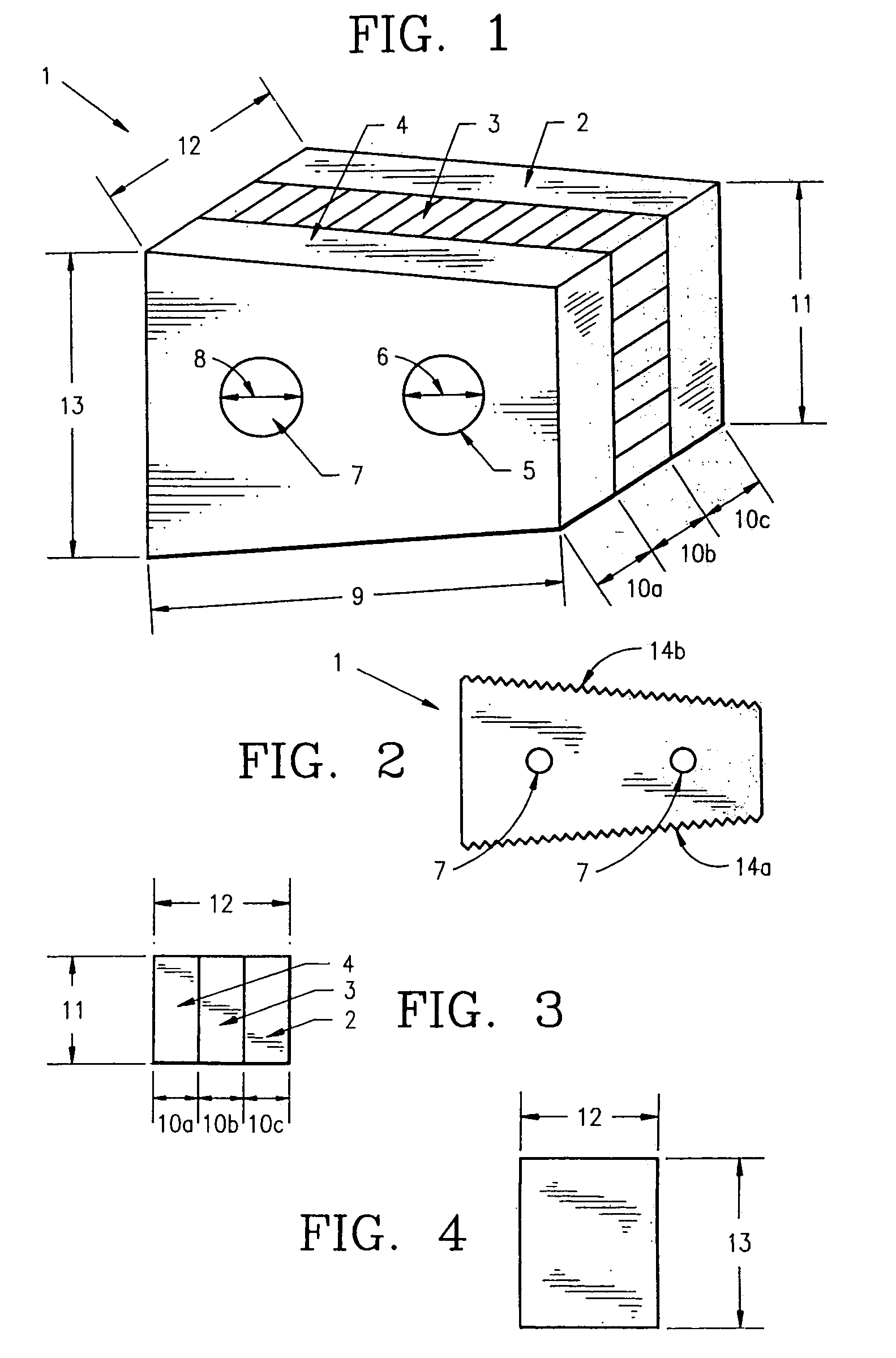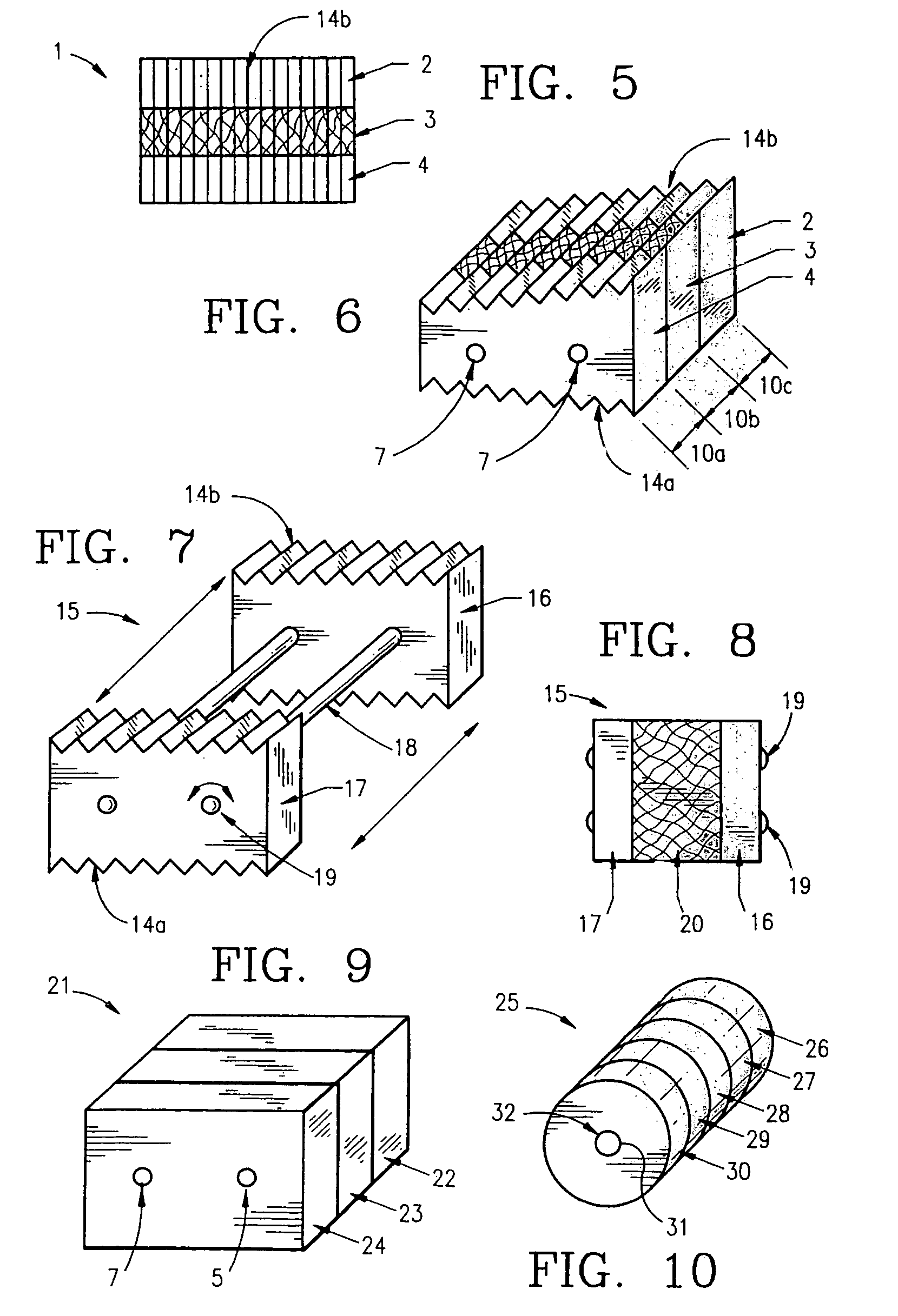Composite bone graft, method of making and using same
a bone graft and composite technology, applied in the field of bone grafts, can solve the problems of insufficient load bearing, insufficient wideness of cortical bone obtained from cadaver sources fashioned into struts, and failure of bone grafts for spinal applications, so as to avoid significant donor site morbidity and adequate mechanical strength
- Summary
- Abstract
- Description
- Claims
- Application Information
AI Technical Summary
Benefits of technology
Problems solved by technology
Method used
Image
Examples
examples
I. Preparation of a Composite Graft
[0267]Donor bone was harvested according to industry accepted standards from a cadaver donor. The composite bone grafts, sized as recorded in Table 1, were prepared according to the method described as follows. Using a bandsaw cortical planks and pin segments were cut from a cortical shaft. One surface of each cortical planks was smoothed on a planing table and the planks were cut to the recorded thickness using a mill. Thereafter, using a table saw, the cut planks were cut to the recorded width and length. Cortical pins were then cut using a drill press, from the pin segments. Using a drill sander, the cortical pins were tapered sufficient to allow insertion into the reamed graft unit. Next, using a bandsaw, cancellous wafers were cut from cancellous bone to the recorded thickness. The wafers were then cut to the recorded width and length using a table saw. The cortical planks and cancellous wafer were then assembled into a graft unit in a jig and...
PUM
 Login to View More
Login to View More Abstract
Description
Claims
Application Information
 Login to View More
Login to View More - R&D
- Intellectual Property
- Life Sciences
- Materials
- Tech Scout
- Unparalleled Data Quality
- Higher Quality Content
- 60% Fewer Hallucinations
Browse by: Latest US Patents, China's latest patents, Technical Efficacy Thesaurus, Application Domain, Technology Topic, Popular Technical Reports.
© 2025 PatSnap. All rights reserved.Legal|Privacy policy|Modern Slavery Act Transparency Statement|Sitemap|About US| Contact US: help@patsnap.com



